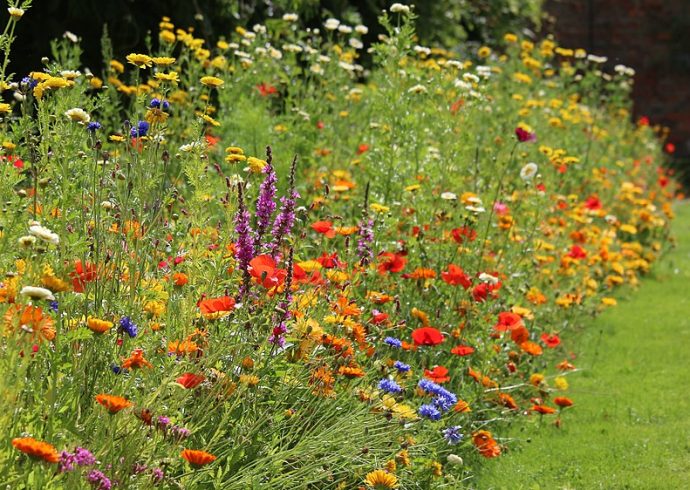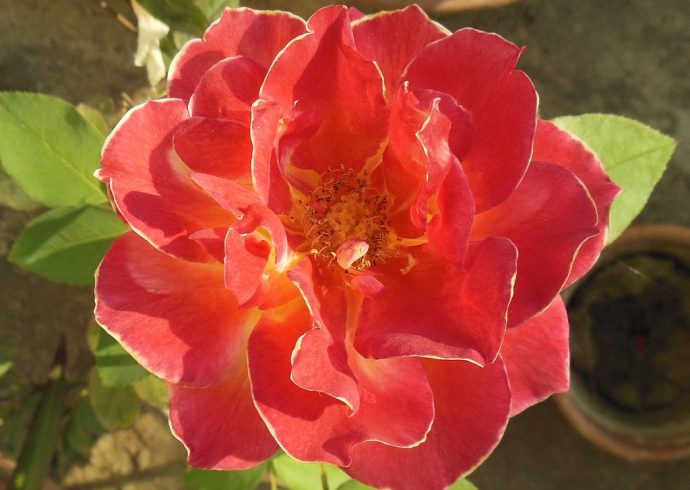
Planting an English Garden
If you are seeking a new look for your annual flower garden, an English garden may be just the right thing for you if you already have a border hedge or are planning to create one in your yard. The border hedge can be either in your front yard or back yard, and it can be of any height you choose. For example, if you prefer more privacy, a higher hedge is more desirable than a lower hedge.
Traditionally, yew was the favored hedge for the formal English garden but with the varieties of hedges available through nurseries in the nation, you can choose from non-flowering hedge bushes to flowering hedge bushes. Some evergreens change color throughout the seasons: the Dwarf Burning Bush has green leaves during the spring and summer seasons; in the fall, the leaves turn flame red in color and had red berries, while the Virginia juniper bush turns purple in the fall season.
Your English garden doesn’t have to be in the formal tradition, you can use something completely different for a hedge, like the Persian purple lilac bush, which flowers profusely in May each year. So if you plan on installing a hedge border in your yard, choose a hedge plant that appeals to you and grows well where you live, taking into account the quality of the soil in your garden. If you already have a walkway, you can design your hedge border so that it is at least twenty to thirty inches outside of the walkway, permitting enough room for a variety of seasonal flowers to grow.
Flowers come in a wide range of colors and you can mix lavender shades of flower varieties with the purple flowers, and lighter shades of yellow, red, and blue flowers with the richer jewel tones when you plan your garden layout. Below is just a partial list of suggested plants for your English garden:
Red: poppy, salvia, roses, Cardinal red hydrangea, gladioli, amaryllis, dahlia, freesia, ranunculus, tulips, zinnias.
White: chrysanthemum, hyacinth, gladioli, cosmos, foxglove, hosta, scabiosa, snapdragons, phlox, anemone, callas, dahlias, freesia, heather, gardenia, zinnias.
Pink: foxglove, scabiosa, snapdragons, phlox, hyacinth, tulips, gladiola, larkspur, gerbera, peonies, roses, sweet peas, chrysanthemum, zinnias.
Blue: hibiscus, bachelor’s button, scabiosa, hydrangea, iris, delphinium, veronica, monkshood, muscari.
Purple: foxglove, hyacinth, tulips, hosta, scabiosa, allium, agapanthus, freesia, iris, lilac, sweet peas, waxflower, chrysanthemum.
Yellow: marigold, tulips, nasturtium, bittersweet, daffodils, ranunculus, freesia, lily, dahlias, snapdragons, safflower, zinnias, alyssum.
Orange: marigold, wild lily, nasturtium, ranunculus, chrysanthemum, Indian paintbrush, hawkweed, zinnias.
Plants that grow taller get planted closer to the hedge, while lower growing plants, likealyssum and ground phlox, are planted on the outside next to the walkway.
Traditionally, orange, red, and purple flowers are planted along the west border while pink, yellow and blue flowers are planted along the east border of the hedge walls. At the north end, space should be left for white flowers on both west and east sides. Just past the north end where the walkway converges, a gazebo may be placed if one is within your budget. An alternative for a gazebo is to have wrought iron benches placed on either side with a garden table in the center. The grassy center of your garden separating the borders of flowers can be used for parties, weddings, and summer luaus.
Image Credit: Mti, CC BY-SA 4.0, via Wikimedia Commons.


